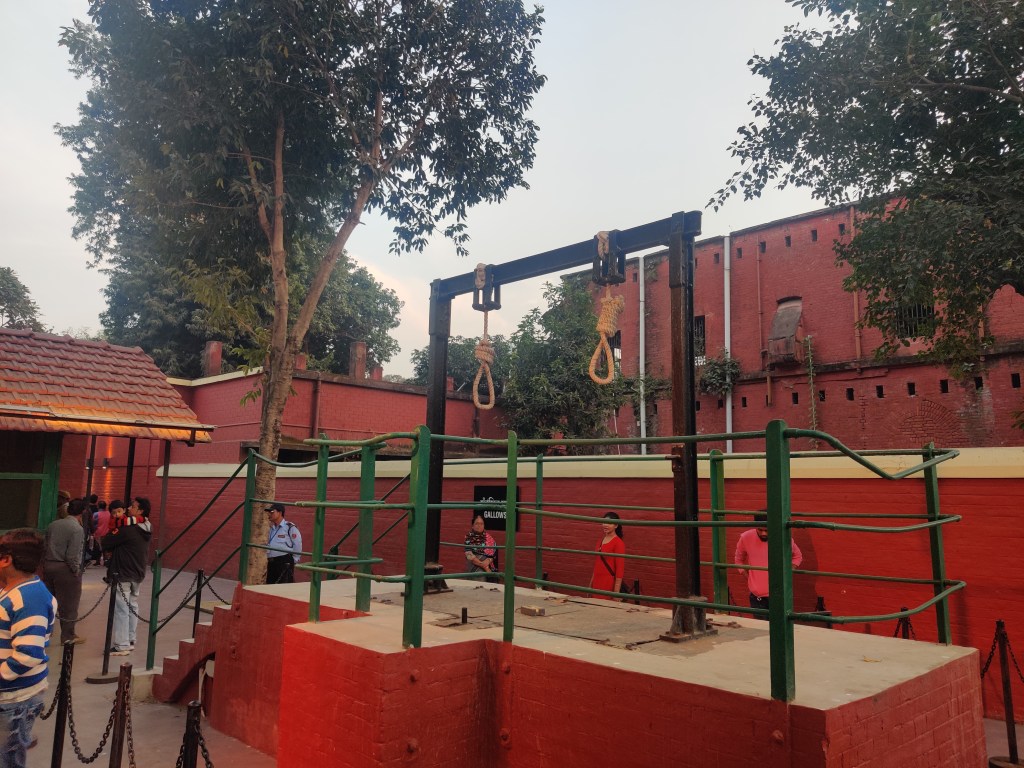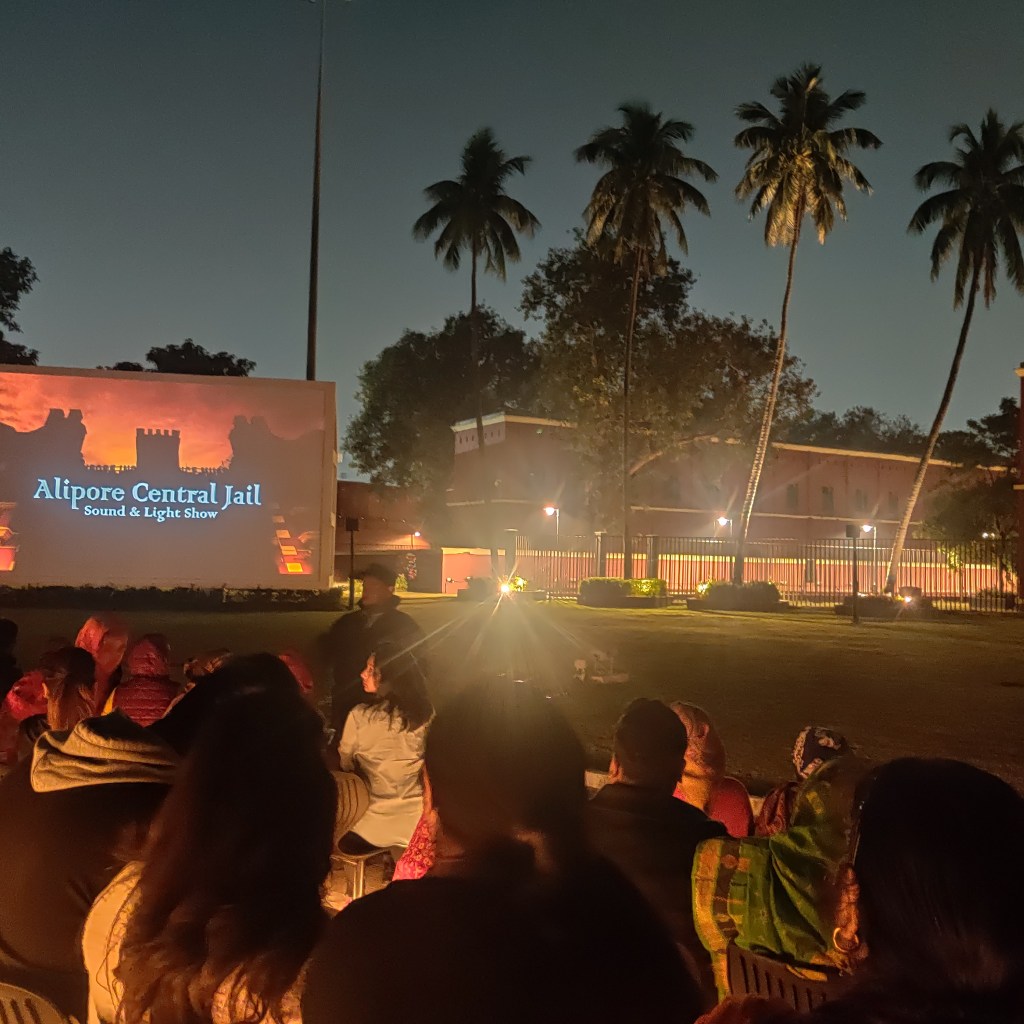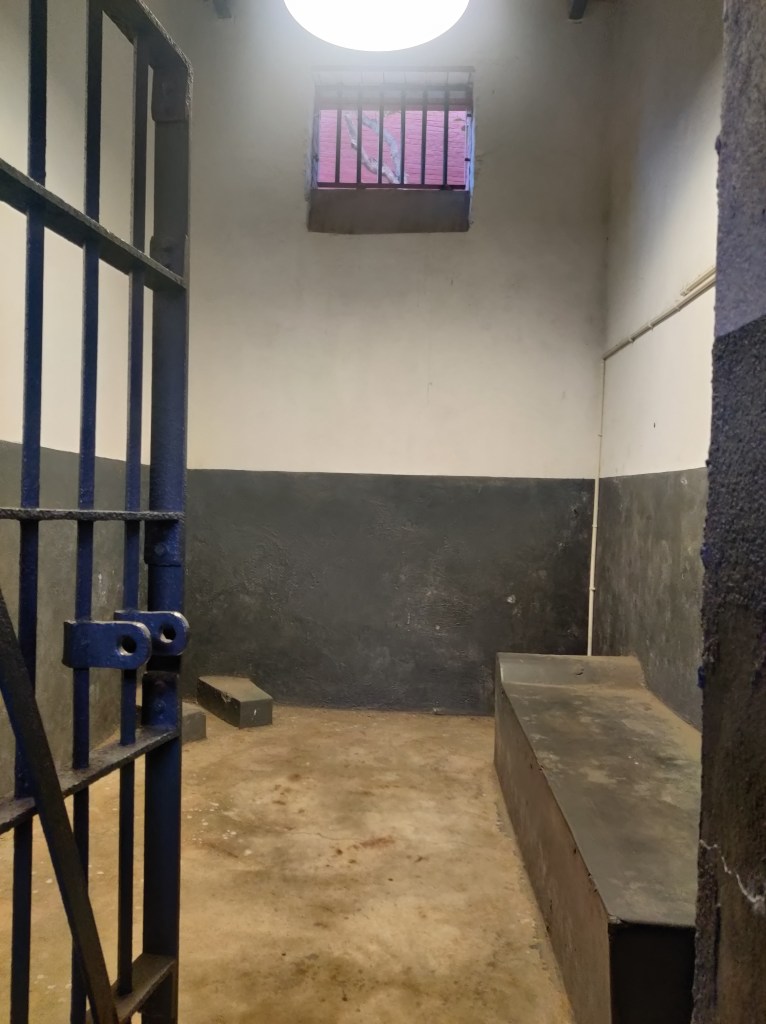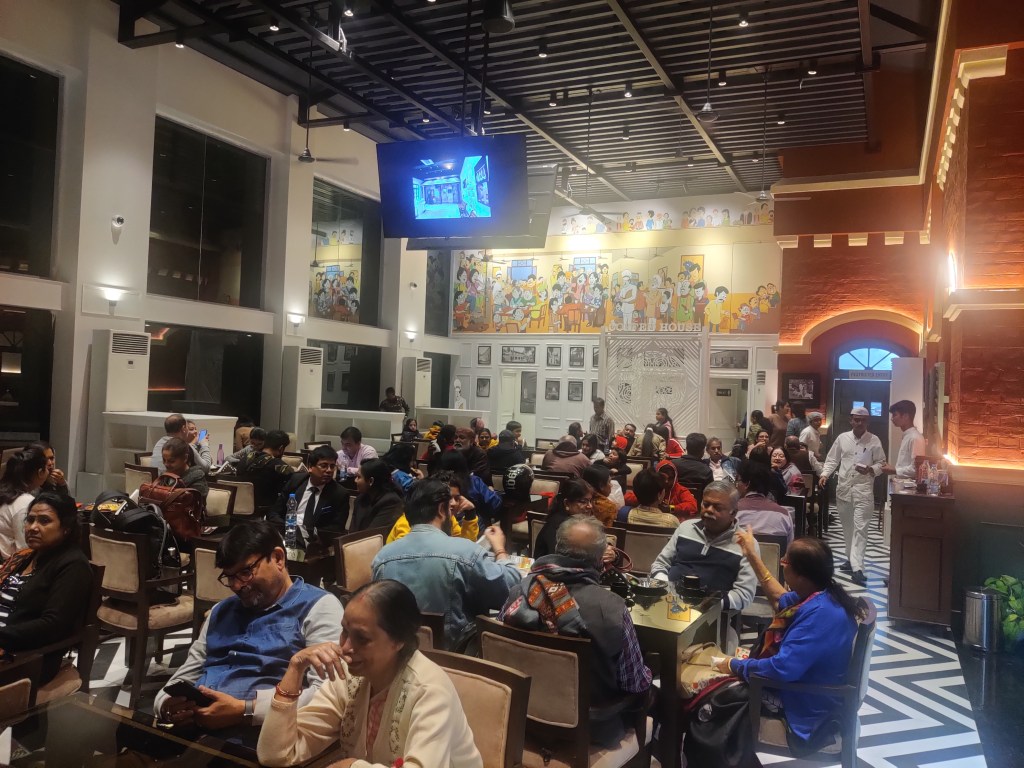“No one truly knows a nation until one has been inside its jails. A nation should not be judged by how it treats its highest citizens but its lowest ones.” – Nelson Mandela

Alipore Jail in Kolkata has recently been converted into a museum and we made a visit. I found the place refreshingly well laid out with directional signs to the various highlights.
Though not well known, there are actually two Alipore Jails. The first Alipore jail, later called the Presidency jail, was built more than two hundred years back. The newer one, which continued to be known as the Alipore Jail, was built close to the earlier one in the early twentieth century. Known as a ‘correctional home’, it was used by the British to hold political prisoners.
A few miles away from Alipore jail is Dalhousie Square. Named after Governor General Lord Dalhousie, who held office in the mid-nineteenth century, it was and continues to be the administrative and Business epicenter of Kolkata. Standing majestically at the center is the Writer’s Building with its French renaissance style architecture, Roman facade and rooftop statues.

Dalhousie Square is today known as Benoy Badal Dinesh (BBD in short) Bagh and therein hangs a tale of an interesting connect it has with Alipore Jail.
It was 1930. With the Indian freedom struggle at its peak, Alipore Jail was bursting at its seams with political prisoners. Colonel N. S. Simpson, the Inspector General of Police, had become the epitome of brutality when it came to dealing with political prisoners. Seeing himself as an able administrator, Simpson had devised an efficient and brutal system to force the prison inmates to reveal their political ideologies and ‘terrorism’ plans. Merciless beatings while hung from a tree, putting chilli powder on the genitals etc. were commonplace.
Three Bengali revolutionaries Benoy, Dinesh and Badal, aged twenty-two, nineteen and eighteen, chanced to come together. Members of the Bengal Volunteers, a group set up by Netaji Subhas Chandra Bose a couple of years earlier, they had found their life’s calling in revolutionary activities. The threesome, having heard horror stories about Colonel Simpson’s notoriety, decided to take the fight to the British administrator.
To gain access to the Writer’s building the three youngsters entered Writer’s building wearing immaculate western attire. Asking to meet Colonel Simpson, they shot him dead point blank. BBD Bagh today stands testimony to the courage of this threesome.

***
As I stood looking at the Alipore jail gallows, I heard a sound and turned around to see an old tree standing forlornly in the courtyard. The rustling leaves seemed to be whispering to me about the killings and the merciless beatings it had been witness to. Did I hear Dinesh shout ‘Vande Mataram’ as he was being taken to the gallows?

Dusk fell and I watched the red-bricked Jail walls come alive and take on the colour of blood. The coloured lasers of the ongoing Light and Sound show pranced to and fro. A multitude of voices ebbed and flowed, from various directions.


Netaji Subhas Bose protesting against brutal assaults on other inmates, just before he was knocked unconscious from a head blow.
Subhas Bose inviting Deshbandhu Chittaranjan Das to a frugal meal that he had painstakingly cooked himself.

Young Indira ‘Priyadarshini’ Gandhi meeting her father Jawaharlal Nehru ( first Prime Minister of independent India) when he was incarcerated in a cell for participating in the civil disobedience movement.

Dr. Bidhan Chandra Roy ( a future Chief Minister of the state of West Bengal), himself serving a sentence, treating sick and injured prisoners in the jail hospital.
The whisperings of the guards on watch tower duty.
The tales that the jail was relating to me were of innumerable shades. Of sacrifice and suppression. Of idealism and brutality.

Night had fallen when I stepped out of the Alipore Jail complex to return home.
As I got into the cab, I mused on the dichotomy of the Western civilizational ethos about freedom and bondage. Did that ethos emanate from a deep-down racial distrust of ‘non-western’ people and their purported non-adherence to western civility and norms which had justified Europe’s colonization ( it was never termed conquest!) of almost all of the planet?
When it came to India, The British parliament and administration had gone to great pains to justify its ‘colonial intervention’ in the name of the rule of law, human rights and upliftment of the natives. An image of a benign Raj was fostered, a righteous mask was worn through setting up parliamentary commissions and inquiries every time there were reported cases of extortion and torture. The British would always take the moral high ground claiming ignorance of torture and beatings indulged in by the indigenous havildars and policemen a category which was illiterate, poorly paid and only too happy to curry favours with the British Sahebs.
In 1854, the Madras torture commission, which had been set up to investigate allegations of torture in the police department, had scathingly observed:
‘The police establishment has become the bane and pest of society, the terror of the community, and the origin of half the misery and discontent that exist among the subjects of Government. Corruption and bribery reign paramount throughout the whole establishment; violence, torture, and cruelty are their chief instruments for detecting crime, implicating innocence, or extorting money. Robberies are daily and nightly committed, and not unfrequently with their connivance; certain suspicious characters are taken up and conveyed to some secluded spot far out of reach of witnesses; every species of cruelty is exercised upon them; if guilty, the crime is invariably confessed, and stolen property discovered; but a tempting bribe soon release[s] them from custody….’
A hundred and seventy years on, does the above sound eerily familiar? As I sat thinking of all this in the cab, the irony of the situation did not escape me. The British have long gone, our tryst with destiny is now three-quarters of a century old. But our governance and law-enforcing structures seem to perpetuate those very aspects which our forefathers had fought against.
Would the shifting of the jail facilities away from British structures like the Alipore Jail finally allow for fresh thoughts and mindsets to set in? I wondered.

The museum boasts an excellent coffee shop which we thoroughly enjoyed. A visit is recommended.
In Musing……. Shakti Ghosal
Acknowledgement : “Very wicked children”: “Indian torture” and the Madras Torture Commission report of 1855: by Anuj Bhuwaniam Replicated from Sur – Revista Internacional de Direitos Humanos, São Paulo, vol.6, n.10, pp. 6-27, 2009


Hi Bela,
Interesting what you have written about the Age of Aquarius. Let us wait and observe with positivity.
Shakti
LikeLike
Lucid writing!
LikeLike
Hi Barid,
Thank you my friend.
Cheers
LikeLike
Informative piece nicely presented. It has nudged me to plan a visit
LikeLike
Hi Nilanjan,
I am so happy that the post has motivated you to visit the Alipore Jail museum. You would not be disappointed.
I would be delighted to get your feedback after your visit.
Regards
Shakti
LikeLike
What an informative piece. The article made me want to visit the Museum.
LikeLike
Hi Dash,
Thanks for your presence here. Keeping your background in mind, you should surely visit the museum.
Cheers
Shakti
LikeLike
From this jail to Barcelona’s Modelo prison to the London Dungeon; Alcatraz and Guantanamo Bay and so many others, human creativity takes a macabre turn at creating suffering and horror, as it too often has throughout the history of ‘civilization.’
I hope daily for a more compassionate world, where each has dignity and peace. Animals too.
🙏💓
LikeLike
Good one, Shakti.
LikeLike
Delighted to see you here Vats. Glad you liked the piece. Do share 🙂
LikeLike
Hi Bela,
Delighted to see your comment.
Indeed most of us yearn for a more compassionate and peaceful world. It thus leaves me wondering as to what is at the core of so much of ‘horror and suffering’ that continues to prevail? Does the horror and suffering serve humanity in some way? And if it indeed does, what needs to shift?
Questioningly yours.
Shakti
LikeLiked by 1 person
What needs to shift? Man’s attachment to power over others, a Saturnian concept. But we are entering the Age of Aqarius where the cosmos is urging us into a more equal collective vision. Last time this happened was 12000 yrs ago. It’s time. 🙏❤️
LikeLike